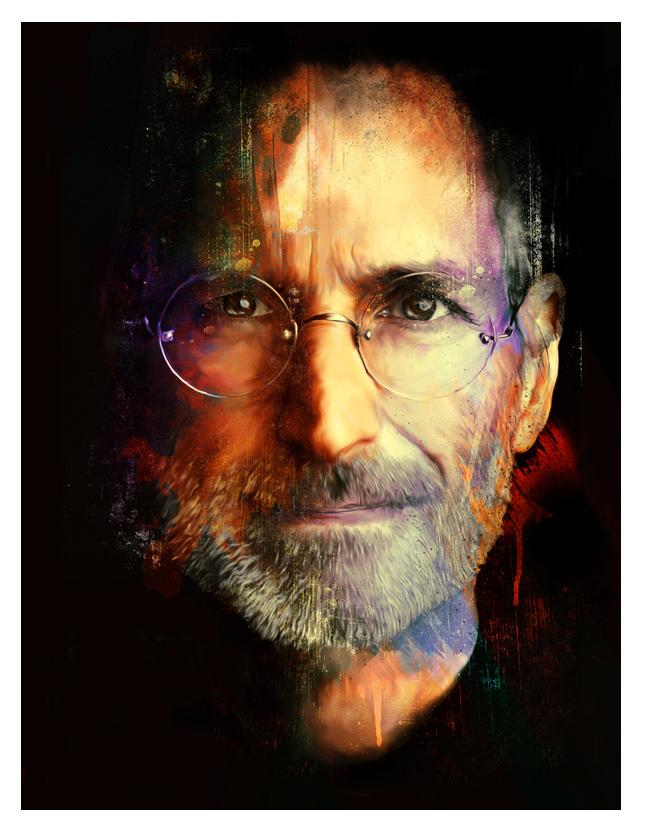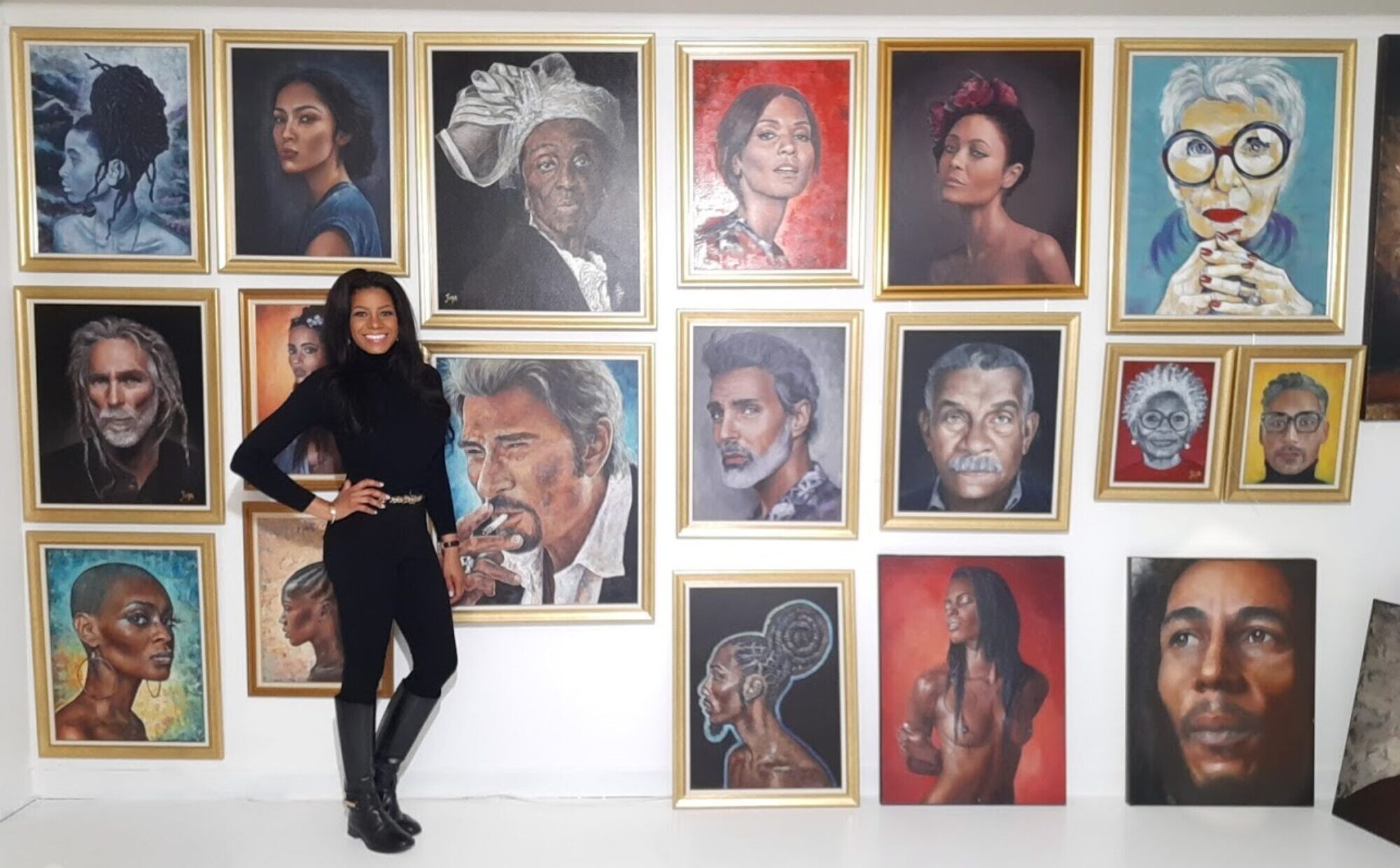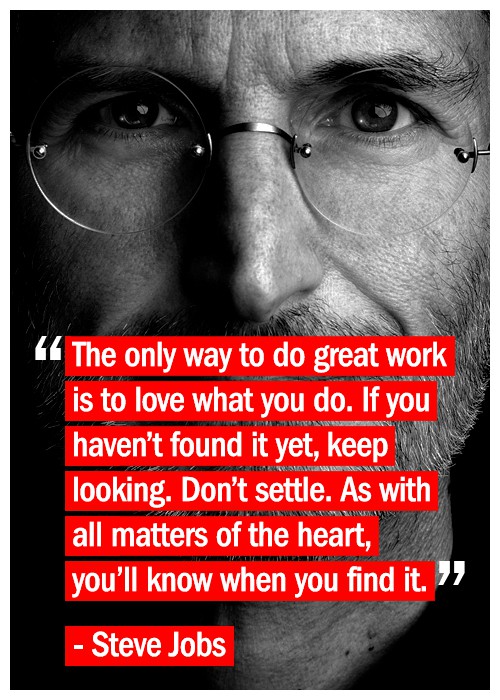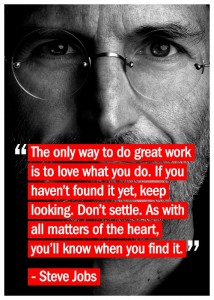
Like hundreds of thousands of Apple fans, I am fascinated by the incendiary brilliance of Steve Jobs and by the revolutionary products he created. I have no fewer than four Steve Jobs biographies in my library. I’ve read the unpleasant stories, and there are many: from Steve’s lack of basic hygiene in his youth, and his initial denial of paternity of his first daughter to the suggestion that he continually duped his long time partner, Steve Wozniak, the real brains behind Apple in its early days, but his luster remains. I am an admitted Steve Jobs junkie. Through his companies, Jobs transformed at least seven industries including animated movies, personal computing and music. I was delighted to find that Jobs has been featured in the April 2012 edition of the Harvard Business Review magazine. Six months after his death, his official biographer, Walter Isaacson, has skillfully distilled what is essentially an executive summary of Steve Jobs’ leadership style, in a brilliant 6,000 plus word article titled ‘The Real Leadership Lessons of Steve Jobs”.
Isaacson identifies fourteen leadership lessons, surmising that Jobs “belongs in the pantheon of America’s great innovators, along with Thomas Edison, Henry Ford, and Walt Disney.” Fortune Magazine has also recently named Steve Jobs the greatest entrepreneur of our time. If Isaacson is right, then history is well on its way to remembering Steve Jobs less for his bad behavior and extreme emotionalism and more as an innovator who applied his personality, efforts and energy into transforming technology and business.
Here is a summary of the fourteen leadership principles:
Steve Jobs Leadership Lesson #1 – Focus
Steve Jobs was famous for his laser-like focus. This natural personality trait was further honed by his study of Zen philosophy; “deciding what not to do is as important as deciding what to do”. Shortly before his death, Larry Page, Google’s co-founder visited Jobs to ask for advice. Jobs told him to figure out the top five products Google should focus on and “get rid of the rest, because they’re dragging you down”. Page followed his advice, announcing to Google employees in January 2012 that they would “focus on just a few priorities, and make them “beautiful,” the way Jobs would have done.
Steve Jobs Leadership Lesson #2 – Simplicity
Steve Jobs focused on annihilating complexity when creating products. He lived and breathed the Leonardo da Vinci tenet that appeared in Apple’s first marketing brochure: “simplicity is the ultimate sophistication.” Ten years ago, the portable music player industry was ripe for a shake up, and Jobs’ quest for simplification led to the revolutionary iPod followed by the iPhone. When setting their sights on what to do next, today’s emerging business leaders need only find products that are more complicated than they need to be.
Steve Jobs Leadership Lesson #3 – Elegance
Steve Jobs strove to deliver the elegant ideal. “People are busy”, he would say “they have other things to do than think about how to integrate their computers and devices.” And so, he took responsibility for the entire user experience, owning what he called “the whole widget”. Hardware, software and peripheral devices had to be seamlessly integrated. The leadership lesson here is to create products and service which reflect a passion for delivering delightful user experiences from start to finish.
Steve Jobs Leadership Lesson #4 – Innovation
Steve Jobs knew that success was not just coming up with new ideas first, but being able to eclipse previous success through innovation. When he realized that original iMac left their users powerless to download, rip and swap music the way PC users could, he famously said “I felt like a dope. I thought we had missed it”. Instead of just playing catch up, he innovated. The result was an integrated system that transformed the music industry through the iPod, iTunes and the iTunes music store. And then, sensing the threat posed by mobile phone makers adding music players, and at the risk of hurting iPod sales, he created the iPhone. “If we don’t cannibalize ourselves, someone else will”.
Steve Jobs Leadership Lesson #5 – Authenticity
During the early days of Apple, Steve Jobs motivated his team to create “insanely great” products. During his ten-year absence, with John Sculley at the helm, the focus shifted to profit maximization, and product design suffered. Steve Jobs theorized that is was one of the reasons companies decline. “My passion has been to build an enduring company where people… make great products… the products, not the profits, were the motivation. It’s a subtle difference, but it ends up meaning everything”. Today’s leaders and entrepreneurs will do well to stay true to the purpose of their businesses and remain authentic.
Steve Jobs Leadership Lesson #6 – Vision
Henry Ford once famously said, “If I’d asked customers what they wanted, they would have told me, ‘A faster horse!” Steve Jobs believed in being passionately committed to delivering products customers would love, but not in asking them what they want. He relied on his own vision. Jobs felt that finely honed intuitive powers could tap into desires not jut fully formed. Sometimes the only focus group leaders need is themselves: We made the iPod for ourselves,” he said, “and when you’re doing something for yourself, or your best friend or family, you’re not going to cheese out.”
Steve Jobs Leadership Lesson #7 – Certitude
Steve Jobs was known for demanding the impossible, his certitude the only guarantee of success. His infuriatingly effective ‘Reality Distortion Field’ led those he worked with to perform extraordinary feats. From having his partner produce a new game in four days, after saying it would take months, to having an engineer who explained it was impossible to shave 10 seconds off boot time deliver a 28-second time savings just a few weeks later. Jobs would stare at you blankly and say with unwavering conviction while demanding the impossible “Get your mind around it. You can do it”.
Steve Jobs Leadership Lesson #8 – Discernment
Steve Jobs’ early mentor instilled in him the importance of discernment. Mike Markkula knew that people form opinions on companies and products based on presentation and packaging. This became one of Job’s guiding principles. He obsessed over the design of the boxes that held the iPod and iPhone, and insisted on adding a handle when the candy-colored new iMacs were created, adding “unnecessary” expense in order to make the product friendlier.
Steve Jobs Leadership Lesson #9 – Tenacity
Steve Jobs was known to go back to the drawing board even in the advanced stages of product development. If it felt wrong, he had no qualms asking his designers, development teams and engineers to work nights and weekends to get things just right. He did it with Toy Story, even after Disney had insisted on darker, more mature re-writes; he stopped production to make it the family friendly success it eventually became. The iPhone was revamped even after the design was first approved. He never compromised on consistency of beauty and quality, using the lesson he learned doing carpentry with his father “a great carpenter isn’t going to use lousy wood for the back of a cabinet, even though nobody’s going to see it.”
Steve Jobs Leadership Lesson #10 – Selectivity
Steve Jobs insisted on having only the best talent on his teams. Jobs refused to indulge in what he referred to as a “Bozo explosion”: the creation of passively polite environments where mediocrity is allowed to flourish. Although his selectivity often manifested as stormy petulance, he reasoned “when you have really good people, you don’t have to baby them. By expecting them to do great things, you can get them to do great things”. And did he ever.
Steve Jobs Leadership Lesson #11 – Collaboration
Despite working in a high-tech field, Steve Jobs relied heavily on the synergy that often takes place in face-to-face collaboration. He was known to take long walks during intense negotiations. The Apple headquarters was designed to encourage chance meetings and maximize person-to-person encounters. He wanted people to engage, interact and brainstorm informally because he believed that sparked a kind of magic. His advice to leaders on the subject of collaboration very well might have been: “forget the PowerPoint presentations and get people interacting”.
Steve Jobs Leadership Lesson #12 – Detail
In the midst of all his far-reaching plans, Steve Jobs also knew that God is in the details. Even while creating grand concepts for the future of his company, he applied his passion to the small things as well; he was known to fret over the shape and color of screws in the iMac. To leaders, the realization of overarching business strategies might very well depend on never losing sight of the importance of even the tiniest details.
Steve Jobs Leadership Lesson #13 – Imagination
Steve Jobs was fascinated with concept of standing at the intersection of humanities and sciences. Like Benjamin Franklin, and Albert Einstein before him, he used imagination to bridge the gap between arts and technology. Leaders who can bring right-brain imagination to left-brained fields of science, and engineering will be critical to the business success in the 21st century.
Steve Jobs Leadership Lesson #14 – Non-Conformity
Having grown up in the San Francisco Bay area in the 1960’s, Steve Jobs was a product of both the hippie anti-war counterculture and the geek-filled, high-tech world of Silicon Valley. His behavior, passions and business reflected the contradictions and confluence of these divergent elements. The pithy maxim, ‘Stay Hungry. Stay Foolish”, reflects the way he lived his life, and the way he positioned Apple, starting it out in his parents’ garage to become the world’s most valuable company at the time of his death. Jobs helped compose the text for Apple’s “Think Different” ad campaign. The words speak for themselves: “Here’s to the crazy ones. The misfits. The rebels… We see genius. Because the people who are crazy enough to think they can change the world are the ones who do.”





